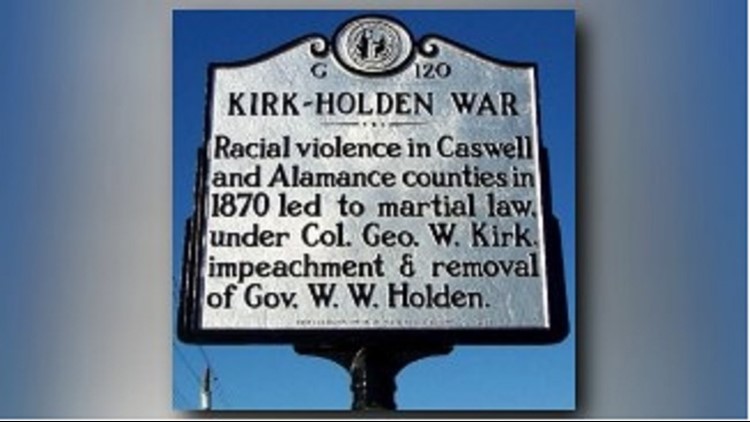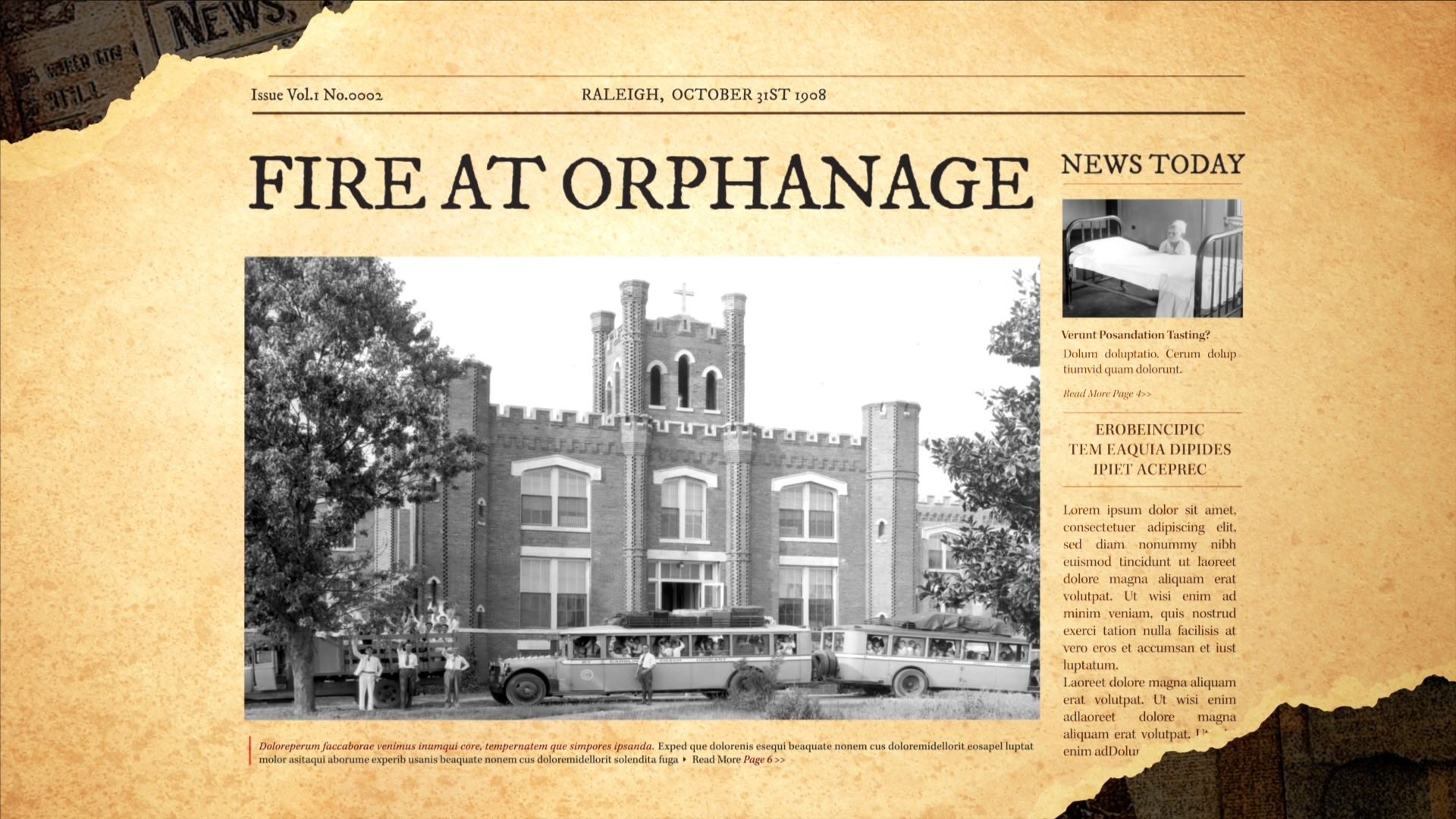Lynching of Wyatt Outlaw and the Kirk-Holden War
Kirk-Holden War - Racial violence in Caswell and Alamance counties in 1870 led to martial law, under Col. Geo. W. Kirk, impeachment & removal of Gov. W.W. Holden
On February 26, 1870, Graham town commissioner Wyatt Outlaw, an African American, was lynched by a band of Ku Klux Klansmen.
Outlaw served in the 2nd Regiment United States Colored Cavalry during the Civil War. In 1866, he attended the second freedmen’s convention in Raleigh and soon after organized the Union League, an organization that aimed to promote loyalty to the United States after the Civil War, in Alamance County, as well as a school and church. Outlaw became the target for a Klan mob because he was an effective leader, able to work with both races.
With Klan violence mounting following Outlaw’s murder, Governor William Woods Holden declared a state of insurrection in Alamance and Caswell counties in July 1870. A militia force under George W. Kirk of Tennessee suppressed the Klan in those counties.
Nearly 100 Klan suspects were arrested during the “Kirk-Holden War,” but most were released on technicalities and none were ever tried. White supremacists gained control of the General Assembly in elections that November and impeached Holden for using the militia against the Klan. He was cast out of office in March 1871.
Superior Court judge Albion Tourgee indicted 18 Klansmen for Outlaw’s murder, but an amnesty bill from the legislature resulted in their never going to trial.
Paper Production Milestone in Roanoke Rapids, 1909
A paper plant in Canton in 1922On February 26, 1909, the Roanoke Rapids Paper Manufacturing Company produced the first sulphate processed kraft paper in the United States. The sulphate name refers to the use of sodium sulphate, or sulphur. Kraft paper has long been used in applications ranging from butcher paper to concrete sacks. It is usually coarse and strong and is often light brown in color.
The pulp mill, constructed between 1907 and 1909, was part of the greater Roanoke Rapids Manufacturing Company, incorporated in 1905. At the outset of production, the mill generated between 15 and 18 tons of pulp per day, and that daily amount was soon increased to 25 tons.
Between 1909 and 1912, the finished product of the paper mill was made from ground wood pulp and sulphate pulp. Kraft paper was manufactured entirely from sulphate pulp after 1912. In 1913, the name of the business was changed to Halifax Paper Company, and improvements were made to the plant in order to boost production to 35 tons per day. The company continued to expand and merge over the years and is now a subsidiary of International Paper.
Prisoner Exchange at Northeast Cape Fear River, 1865
On February 26, 1865, ten miles northeast of downtown Wilmington, Union and Confederate forces began negotiations that saw a total of 8,684 Union soldiers (including 992 commissioned officers and 120 African American troops) exchanged for an unknown number of Confederate prisoners of war. Many of the Union troops had been prisoners at Salisbury Prison.
Gen. Ulysses S. Grant informed Secretary of War Edwin Stanton that an agreement regarding prisoners held by the warring armies was at hand. The negotiated agreement was completed on February 16 and word relayed to field officers and prison commandants.
Wilmington fell to Union troops under the command of Maj. Gen. J. M. Schofield on February 22, and the following day he sent word to his Confederate counterpart, Gen. Robert F. Hoke that he was prepared to receive prisoners of war “at the crossing of the Northeast Cape Fear River, on the main road from Wilmington to Goldsborough.”
Schofield assigned Brevet Brig. Gen. Joseph C. Abbott as his special agent of exchange. Abbott reported that the exchange of troops at that site commenced on Sunday, February 26, and took seven days.
Other related resources:
· The Civil War on NCpedia
· The North Civil War Experience from N.C. Historic Sites
· North Carolina and the Civil War from the N.C. Museum of History
For more about North Carolina’s history, arts and culture, visit Cultural Resources online.



